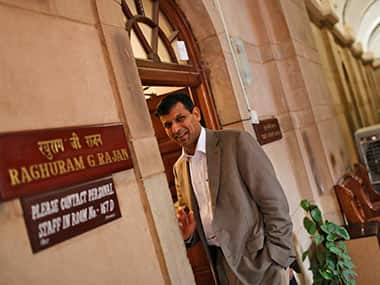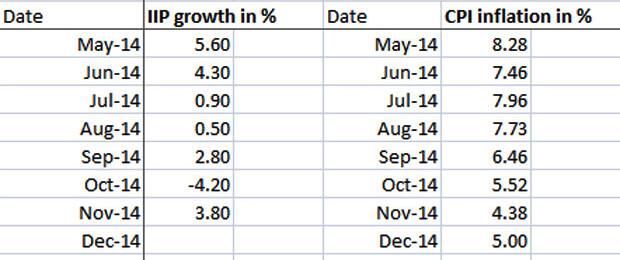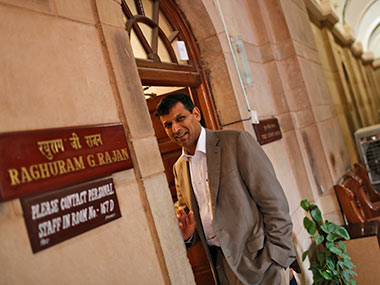The good news is the bad news in the economic data released today (12 January). The Consumer Prices Index (CPI) for December 2014 rose from 4.38 percent in November to 5 percent in December, indicating that RBI Governor Raghuram Rajan may have good reason to be suspicious about the reported death of inflation. [caption id=“attachment_2018425” align=“alignleft” width=“380”]  RBI Governor Raghuram Rajan. Reuters[/caption] However, a closer look at the data suggests that the CPI index number for December, at 144.9, has actually fallen from 145.5 in November 2014. The spike in the CPI inflation rate is thus purely a base effect, and has nothing to do with any imminent rise in inflation again (see full CPI data here). The index had started falling after November 2013, and went on falling till February 2014, after which it started rising again. The CPI figure for December 2013, on which the rise in December 2014 is calculated, was 138; the rate fell further in January and February 2014 to 137.4 and 137.3, before starting to rise again from March 2014. This means some further spike in CPI may be seen in the next three months too, but it could plateau after March. As long as global oil prices stay benevolent, and the minimum support prices (MSPs) for food remain below the rate of inflation for next kharif, the CPI should fall well within the 6 percent target set by the RBI for January 2016. The target for January 2015 was below 8 percent, and that level will be comfortably achieved next month, never mind the negative base effect. Since the food price CPI in December 2014 grew at 4.78 percent, and fuel and light inflation was at 3.41 percent – both below the headline CPI inflation rate – it means there is some inflation in the non-food, non-fuel parts of the index. So it is worth waiting to see what is really driving inflation this year. In the case of the Index of Industrial Production (IIP) for November 2014, which was also out today, the good news was indeed the good news – especially after the shocking 4.2 percent drop in October. In November, the IIP was back in positive territory at 3.8 percent, with all segments of industry –barring consumer durables - reporting positive growth.  Consumer durables, which saw output fall 14.5 percent in November, also reported a saving grace. In the month before, it had crashed by 35.2 percent. This suggests that the fall in consumer spending is slowing, and some kind of revival may be in sight, depending on the budget. Capital goods continued to grow positively, rising 6.5 percent in November (4.9 percent for the April-November period) – which suggests that business may have started investing in a small way. But its ability to invest large amounts in some doubt given its high debt pile-up. Also, the data do not give us any indication that the investment cycle has really turned. Capital goods data tends to be uneven at best of times (read the recent data here) Overall, the latest CPI and IIP numbers indicate that the price situation is benign, and there is little possibility of a quick flare-up. But industry is still a bit under the weather, and needs a pick-me-up from the government. In the Mid-Year Economic Analysis released in December, the Chief Economic Adviser, Arvind Subramanian, made a case for increasing public investment to revive growth in a situation where the private sector is overloaded with debt. He said: “India has been afflicted by what might be characterised as the ‘balance-sheet syndrome with Indian characteristics.’ Like Japan after the real estate and equity boom of the late 1980s, and like the US after the global financial crisis, balance-sheets are over-extended. The Indian case resembles Japan more than the US since it is firms’ balance-sheets (and not those of consumers) that are over-extended, exerting a drag on future investment/spending….In this context, it seems imperative to consider the case for reviving public investment as one of the key engines of growth going forward, not to replace private investment but to revive and complement it.” Minister of State for Finance Jayant Sinha indicated recently that the government may be planning a Rs 2,00,000-3,00,000 crore public investment stimulus in the next year or two to revive growth. It is a much-needed booster shot.
The CPI has risen a bit, but largely on the base effect; the IIP is if, and is waiting for a booster shot from the government to rise further in 2015.
Advertisement
End of Article
Written by R Jagannathan
R Jagannathan is the Editor-in-Chief of Firstpost. see more


)

)
)
)
)
)
)
)
)



